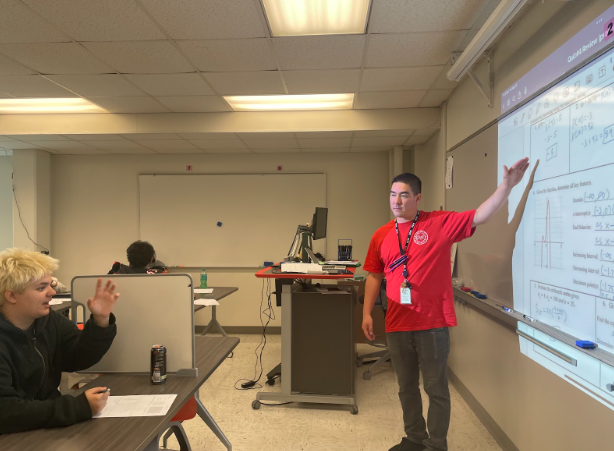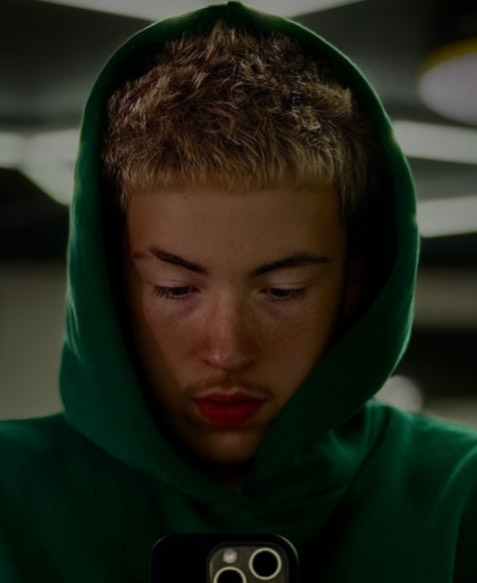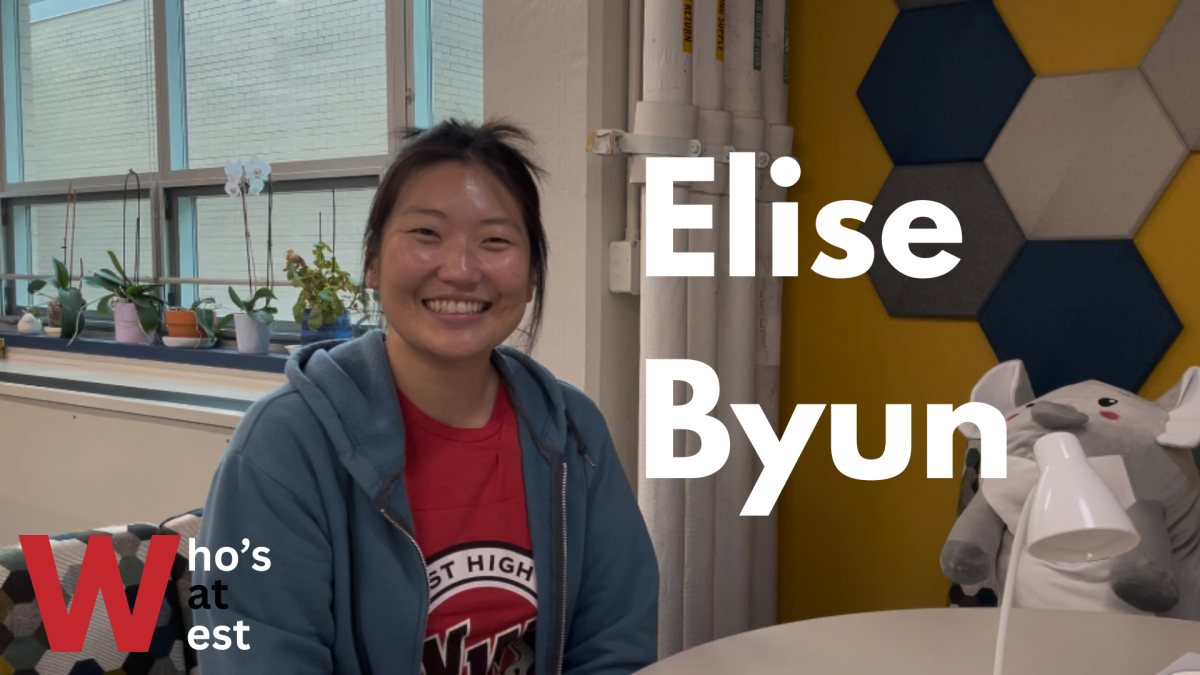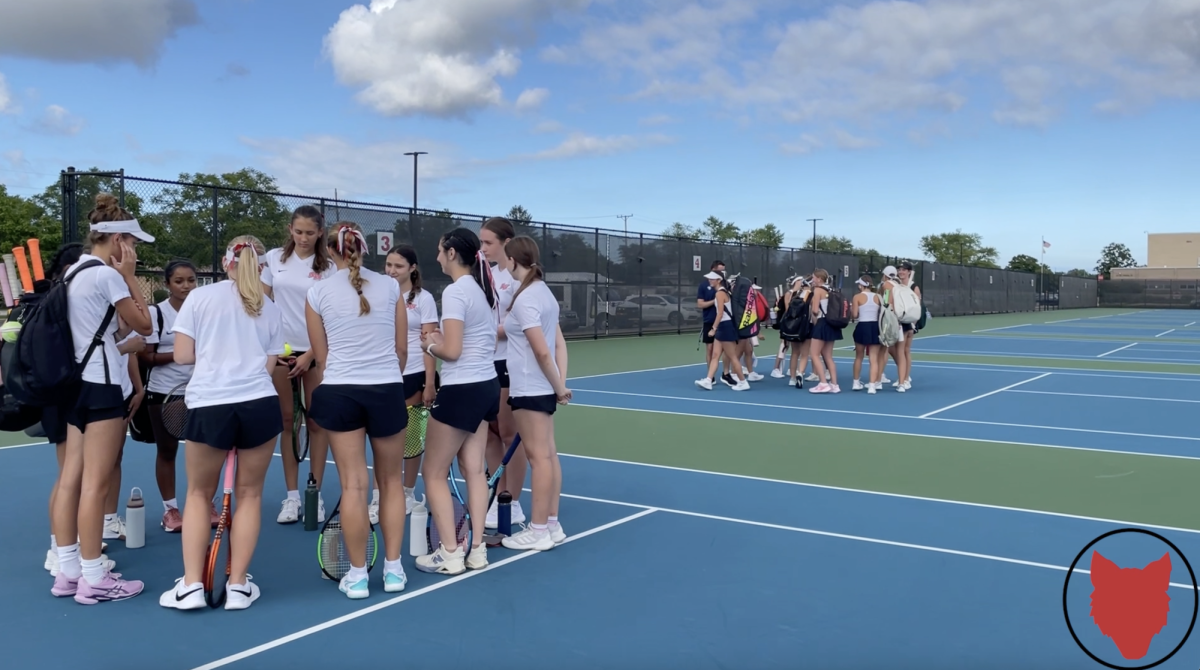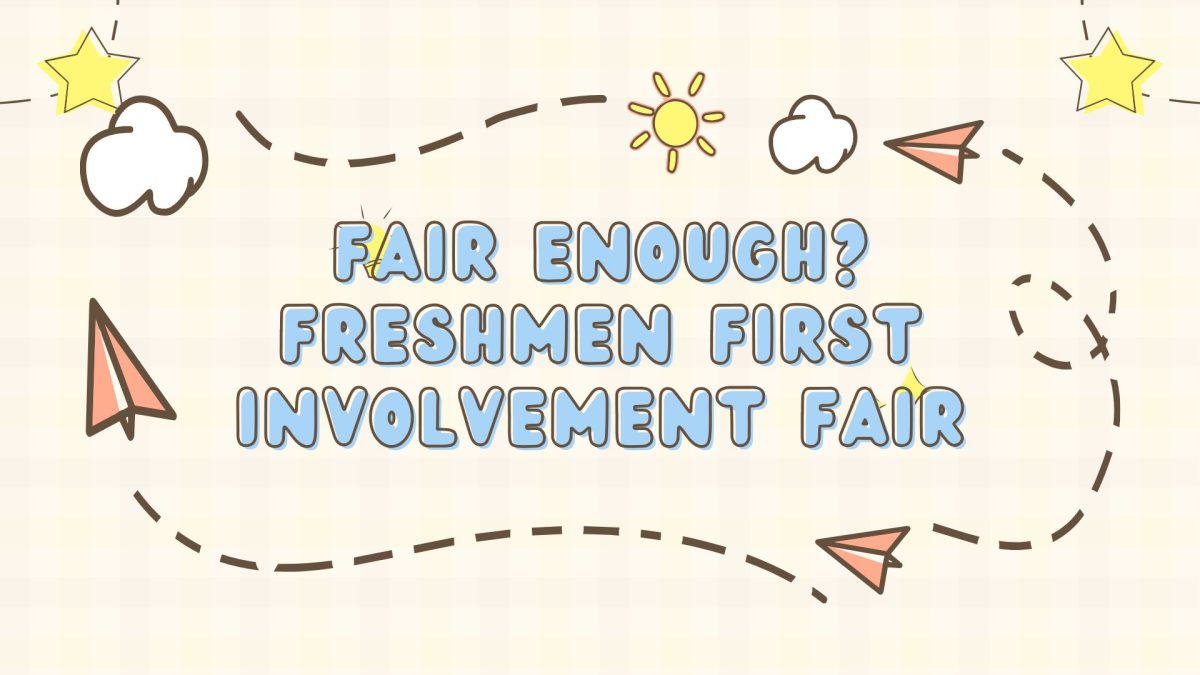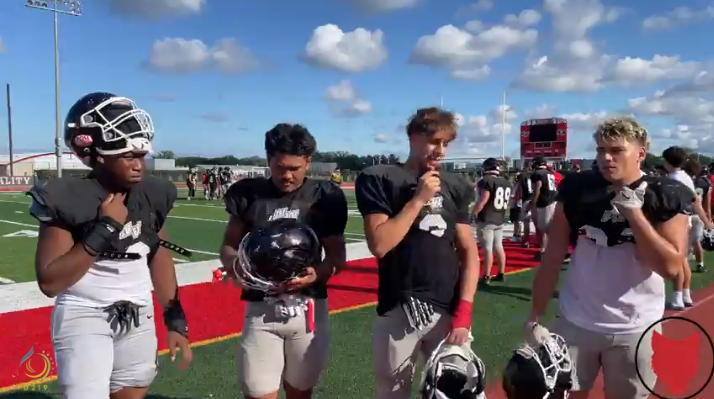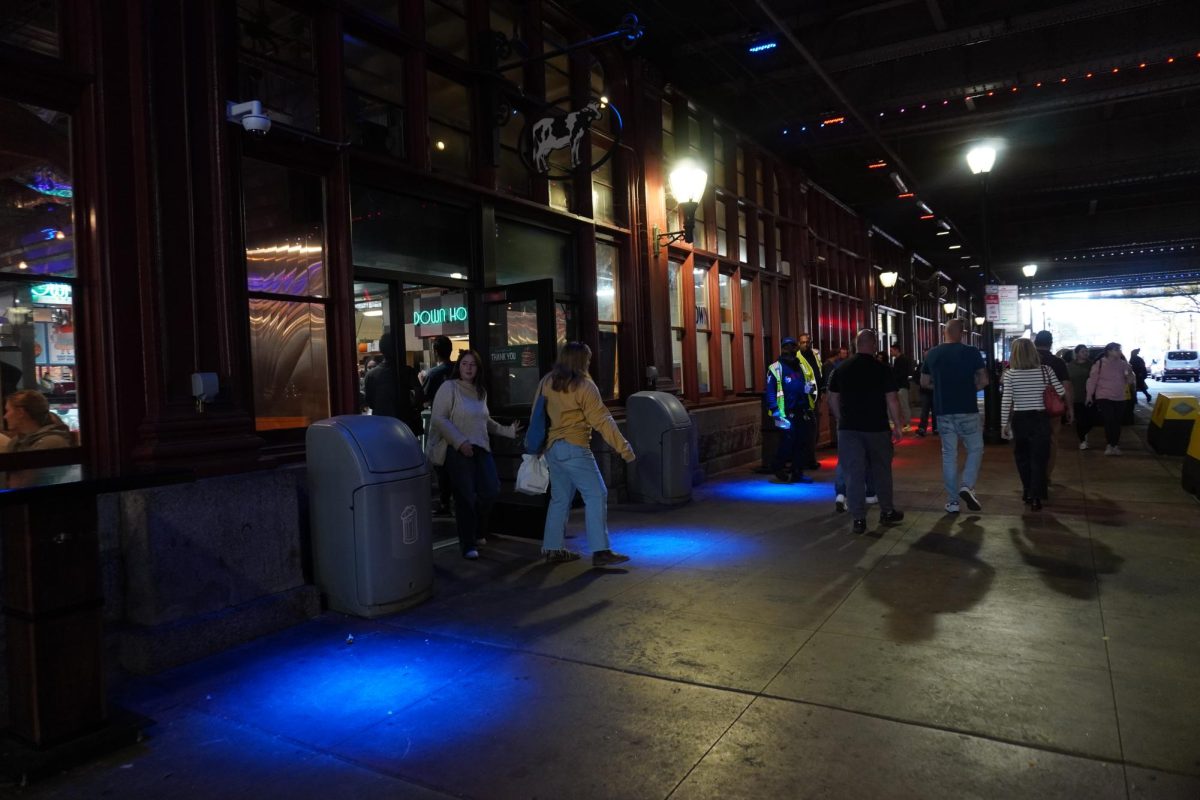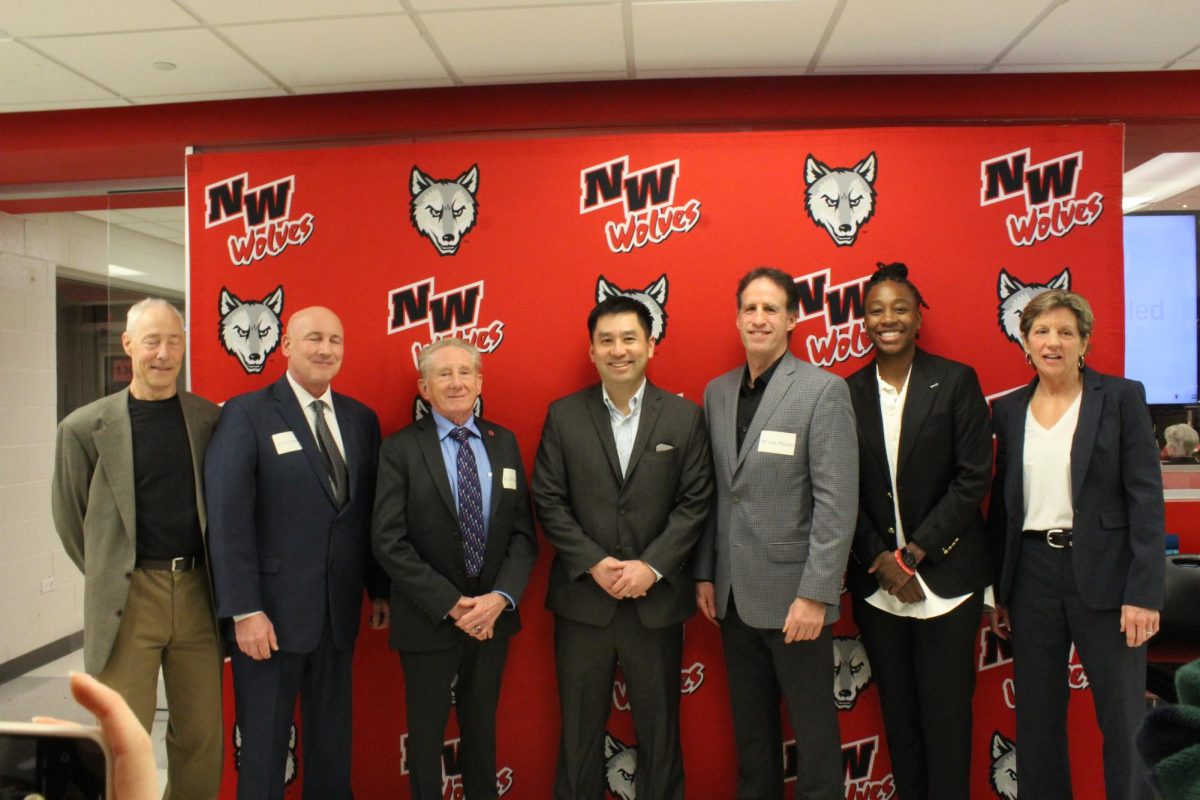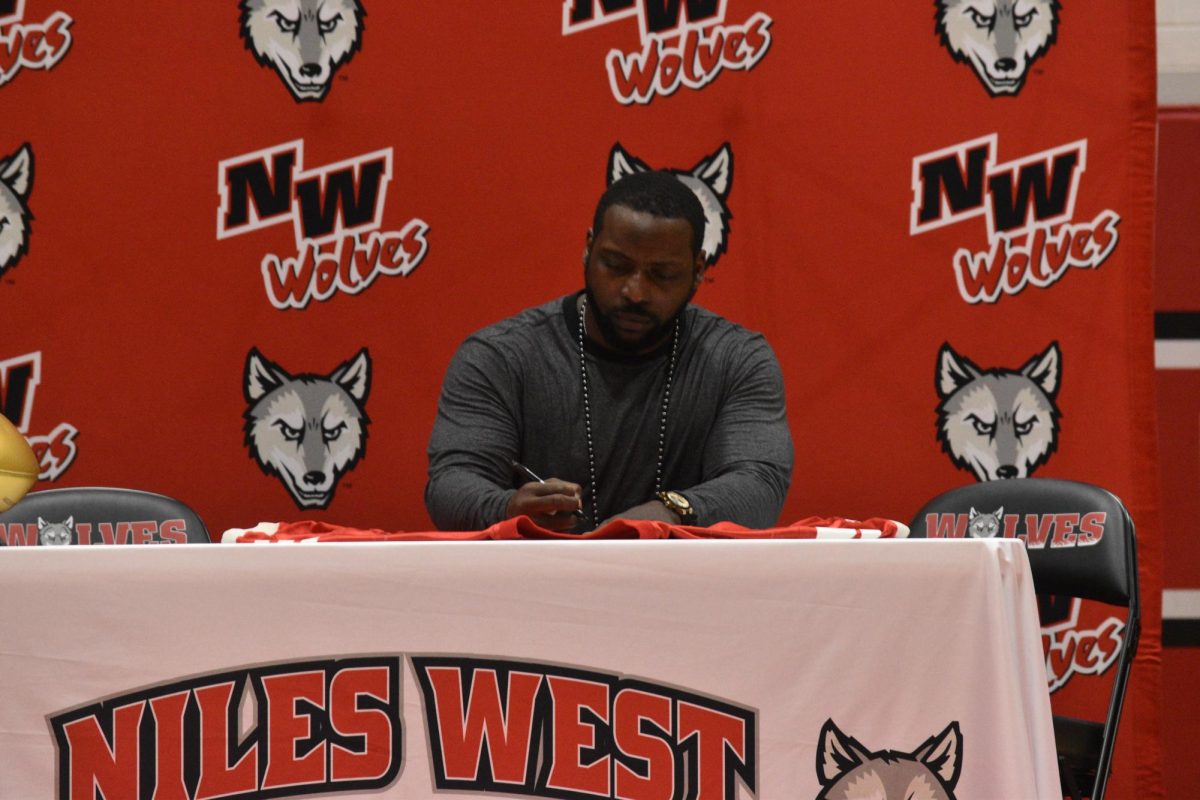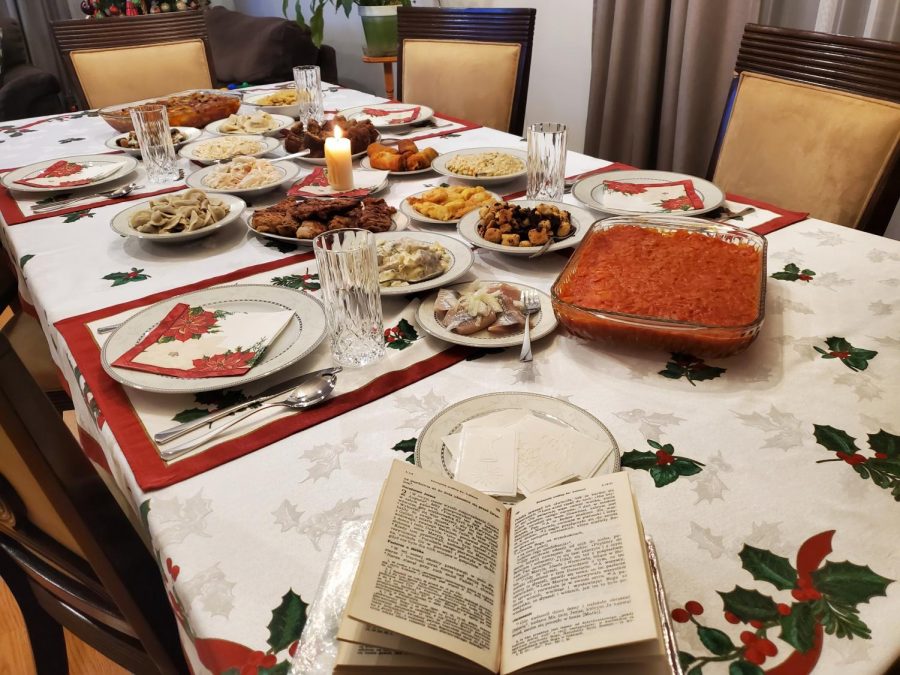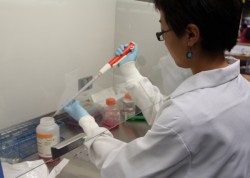
Next time you’re on the third floor, pay special attention to the room across from the math and science offices. In a room as big as three classrooms lays the STEM lab, where our very own students are conducting experiments to further their knowledge on cancer cells and also to help certain types of animals work through global warming.
A few of these students include junior Kristine Park and sophomore Anne McArthy, who are working on the cancer research together, as well as freshman Rachel Sison, who is working with painted lady butterflies to see how global warming is affecting the environment and all of its inhabitants.
The work that these three students have put into the projects that they’ve been working on since the beginning of the year would not have been possible if it wasn’t for the STEM lab and all that is has to offer.
STEM teacher JulieAnn Villa encourages her students to come up with ideas for experiments on their own rather than hold their hand throughout class and instruct them as a group.
In the STEM lab, each student is doing his or her own thing. There are students teaching each other on the whiteboard or computers on one side of the room, students working in a device called the biohood sporting the typical white labcoat, gloves, and goggles, and overall, students just milling about and working on the experimentes that they have devoted themselves to.
There’s no need for Villa to go around and check on her students; they’re all devoted enough and have enough discipline to work without constant reminders to stay on task. The students realize just how privileged they are and take full advantage of their many resources.
“You’ll hear STEM all the time in the newspaper and what not. It’s for science, technology, engineering, and math. There’s a lot of resources in here. They built it about four and a half years ago, and the idea of it is that it’s a place for students to come and explore their own ideas. We have two classes that meet here during the day that, again, students get to explore their ideas. I don’t give them a project. Math students are currently doing the same thing, and then we also have RIOT that supports the students that are not in either of the classes who can also, again, have a place to explore their ideas. We have technology and equipment in here that most colleges don’t have, one of things we have here is called a biohood. When they were installing it, the company said, ‘wow most places don’t even have one of these’ and we have two, so it really is an amazing chance to even just learn a lot of techniques that you can use going forward in college,” Villa said.
Sison is also grateful for the opportunity to work in the STEM lab.
“Starting here as a freshman will help set the foundation for a career [in marine biology.]”
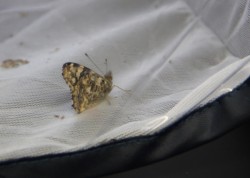
Sison conducted an experiment entitled “the effect of temperature variation on painted lady butterfly growth and development.”
Sison ordered painted lady butterflies and watched their entire life cycle, including their emergence from their chrysalises. She placed them in three different environments: a cool environment, a controlled, room temperature environment, and a heated environment. Each environment varies in temperature by about 10 degrees Celsius.
As the butterflies grow and develop, Sison has been measuring variables such as hatching rates, time taken to emerge from the chrysalis, appearance, and wingspan to see how different temperatures affect the growth and development of the butterflies.
The alarmingly rapid rates of global warming are what inspired Sison’s project.
“Global temperatures have been increasing by about 0.6 degrees Celsius every year, and that’s a huge problem. So, I’m thinking, how will these temp changes affect the populations of butterflies in general?” Sison said.
Since butterflies are cold blooded, her hypothesis stated that in warm environments, less time is taken to hatch from their chrysalis, their wingspan will be shorter, and their appearance will also change, which is both positive and negative since it can affect their migration patterns and other such factors.
Proven correct, Sison was awarded a gold medal int he science fair as well as best in the zoology category, and she also received a special award from the American Meteorological Society.
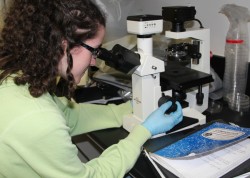
On a different side of the spectrum, McArthy and Park have been inhibiting objects that are present in cancer cells.
“[McArthy and Park] are both students that have worked on projects previously, so they came in with a lot of skills,” Villa said.
The two girls were awarded best in category in biochemistry and also got two special awards, one from the Air Force and one from Iota Sigma Pi.
McArthy and Park have been hoping to bring in another method of counting cells through another stain. One stain has been used to count dead cells, and another one will hopefully be used to acquire more data.
“You have to be self driven, but it’s very exciting,” they said.
Photos by Breana Brill
Video by Carly Tennes



